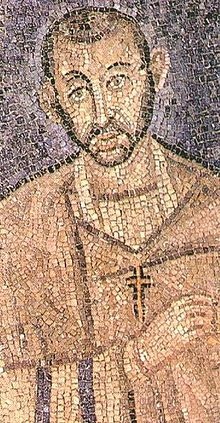Why is Sunday morning the most segregated hour in America?
This question is often raised, especially at this time of year when we are commemorating Martin Luther King, Jr. and approaching February, Black History Month.
It’s a puzzle to church leaders who view a congregation as one big happy family serving under the open-armed leadership of one theologian.
We crave diversity so much that we create our own Potemkin church view.
Our denomination boasts diversity. Hundreds of local Lutherans converge annually at the regional level. The Assembly Room presents a multicolored, multi-aged tapestry of people. But the representation is false. Representatives must meet the criteria of a quota system, which gives the illusion of diversity.
Our congregation made a project of visiting other congregations. We saw very few diverse congregations—maybe five percent—each of them fairly small. Most congregations we visited are either mostly white, mostly black, or mostly an ethnic group of some sort.
Very few have strong memberships under the age of sixty.
Our congregation had a unique experience with diversity. We grew without a called pastor—by forming relationships with several supply pastors and allowing the laity to adapt the worship and fellowship in ways that introduced new traditions without forsaking the old.
This is what we learned.
- Resistance to diversity often comes from leadership. We encountered some sadness from older members as things changed, but when they saw that they were not abandoned, they embraced the change.
- Leaders feel inadequate to lead people who are not like them. We were told flat-out by our denominational leaders that they could not find a pastor for us. They were looking for someone LIKE us. And we had already become diverse. Our bishop actually proposed dividing our united congregation along racial lines. “White Redeemer must be allowed to die. Black Redeemer . . . we can put them anywhere.” When both White and Black Redeemer resisted this idea, a locksmith was called.
- The structure of the Church precludes diverse growth. Such a goal requires an extraordinary leader who can leave behind personal preferences and embrace multiculturalism.
- Lay leadership is important to successful segregation. This requires a pastor that can share “power.”
- Small congregations can lead the way in diversity. It makes sense! Newcomers will not compete for influence with hundreds of people with obvious differences.
- The Church tends to close churches that are best situated to address diversity!
- If diversity is a goal—start promoting small congregations.
Today’s laity grew up in desegregated schools. We work side-by-side with people from all over the world. Clergy tend to come from church backgrounds, which are far less diverse.
If the Church is to achieve diversity, it must empower laity. There is precedent!
 Saint Ambrose
Saint Ambrose
St. Ambrose became Bishop of Milan, by public demand. He was a regional governor—a politician, Although from a devout Christian home, he was not a priest. He wasn’t even baptized!
The Church was far more influential in the fourth century society, but there were still some pesky pagans to contend with.
As governor, Ambrose was making a public appearance to quell a volatile situation.. Think “Ferguson.” His words were well-received. A chant began—Ambrose. Bishop. Ambrose, Bishop.
Now that’s a call!
The Church, its back against the wall with the threat of violence, agreed. Ambrose was quickly baptized and given a crash course in theology.
Ambrose approached his call with humility, embracing the poor. He was able to change the Church of his time—and shape the Church of our time—because he had something the Church needed that the clergy of the time lacked—people skills. Like-ability.
Leaders with people skills—that’s what the Church needs today, especially if diversity is a serious goal.
